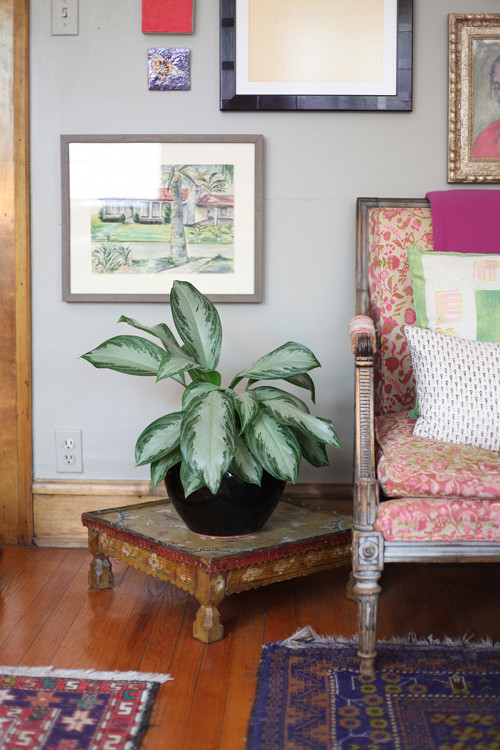Who doesn’t love indoor plants? They not only add elegance to any living area, but also offer numerous other perks such as purifying the air and contributing to improved mental well-being by bringing a touch of nature indoors.
We’ve included some helpful lighting and watering tips for each plant below, but in general, it’s best to avoid overwatering and keep your plants away from drafts and direct sunlight. It doesn’t take much to develop a green thumb!
These are ten of the finest indoor plants that can make a stylish statement in any setting. Let’s explore these botanical delights!
1. The Chinese Evergreen
The Chinese Evergreen (Aglaonema) is a large-leaf, low-lying plant that thrives in areas with lower light.
- Light: Chinese Evergreens are versatile and can thrive in low to bright, indirect light. However, they tend to do best in moderate to low light conditions. Avoid direct sunlight, as it can damage the leaves.
- Watering: Allow the top inch of the soil to dry out between waterings. These plants prefer to be consistently moist but not waterlogged.
- Temperature: They prefer temperatures between 65°F to 80°F (18°C to 27°C). Protect them from drafts and sudden temperature changes.
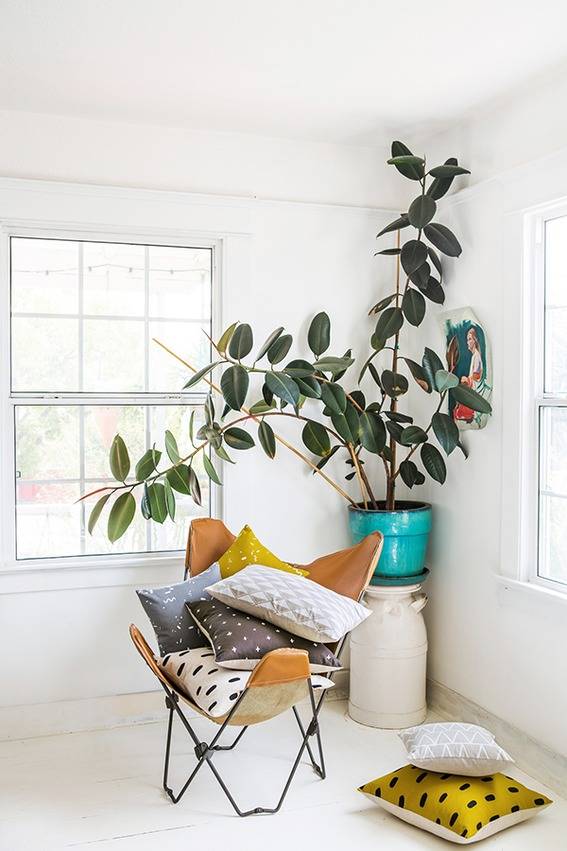
2. The Rubber Plant
Rubber plants (Ficus elastica) are well-liked indoor plants recognized for their shiny dark green leaves and easy maintenance. These plants can thrive for an extended period and grow tall.
- Light: Rubber plants flourish in bright, indirect light. Avoid direct sunlight, as it can harm the leaves. They can withstand some lower light conditions, but their growth may slow down.
- Watering: Allow the top inch or so of soil to dry out between waterings. These plants prefer to be consistently moist but not waterlogged. Water thoroughly when needed, and ensure proper drainage to prevent overwatering, which can cause root rot.
- Temperature: Rubber plants prefer temperatures between 65°F to 80°F (18°C to 27°C). They can tolerate slightly cooler temperatures but are sensitive to cold drafts.
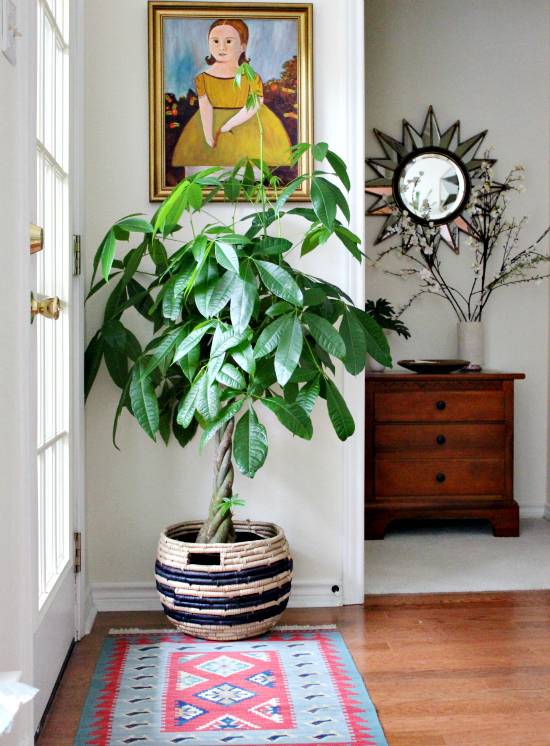
3. Money Tree
Money Trees (Pachira aquatica) are beloved houseplants known for their distinctive braided trunks and association with good fortune and prosperity. I recently acquired a small version of this plant, and my aim is to grow it tall like the one in the photo above.
- Light: Money Trees thrive in bright, indirect light and can tolerate some direct sunlight, but excessive exposure can damage their leaves. Position them near a window with filtered sunlight or in a spot with bright, indirect light.
- Watering: Allow the top 2-3 inches of soil to dry out before watering. Money Trees are prone to root rot if overwatered. Water thoroughly, but ensure good drainage to prevent standing water at the bottom of the pot.
- Temperature and Humidity: Money Trees prefer temperatures between 65°F to 80°F (18°C to 27°C). They are sensitive to cold drafts and should be shielded from sudden temperature drops. They also appreciate slightly higher humidity levels. You can periodically mist the leaves or place a tray of water near the plant to increase humidity. Nonetheless, they can adapt to typical indoor humidity levels.
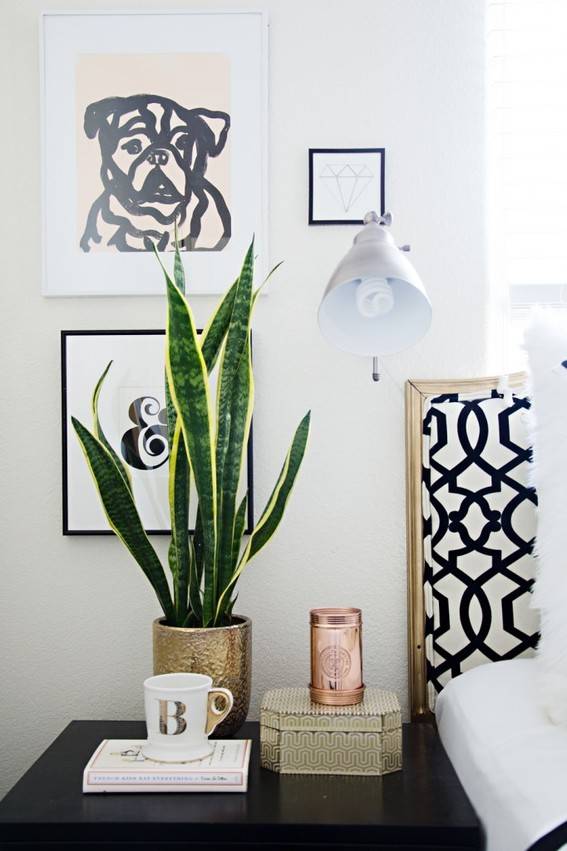
4. Snake Plants
Snake plants, also known as Sansevieria or mother-in-law’s tongue, are widespread houseplants recognized for their minimal care needs. They are highly resilient and can go for extended periods without water. Here’s how to care for them:
- Light: Snake plants are adaptable and can tolerate a broad range of light conditions. They thrive in indirect sunlight but can also survive in low-light conditions. They grow best and maintain their vibrant green color with bright, indirect light.
- Watering: One common mistake is overwatering. Snake plants are adapted to withstand periods of drought, so it’s better to let them dry out between waterings. Water sparingly, allowing the top inch or two of soil to dry completely before watering again. During the growing season (spring and summer), water every 2-6 weeks, and in the dormant season (fall and winter), reduce watering to once every 6-8 weeks.
- Soil: Use well-draining potting mix to prevent overwatering. A cactus or succulent mix is ideal.
- Temperature and Humidity: Snake plants are quite adaptable to different temperature and humidity levels. They do well at typical room temperature and can tolerate lower humidity levels.
Remember, snake plants are known for their resilience and ability to withstand neglect. When in doubt, it’s usually better to underwater than overwater. With minimal care, your snake plant can add a burst of color to your dimmest corners.

5. Boston Fern
The Boston Fern (Nephrolepis exaltata) is an exceptional hanging plant that can make a significant visual impact in a room. This plant may be a statement piece, but it requires a bit of care, especially when it comes to watering and pruning.
The Boston fern is also known for being one of the top air purifiers among plants.
- Light: Boston Ferns prefer bright, indirect light. They can tolerate some morning or late afternoon sun but should be shielded from direct sunlight, which can scorch their delicate fronds.
- Watering: These ferns like to be consistently moist but not saturated. Water when the top inch of the soil feels slightly dry to the touch. Water thoroughly, allowing water to drain from the pot. Avoid allowing the plant to sit in standing water, which can lead to root rot.
- Temperature: Keep your Boston Fern in a room with temperatures between 60°F to 75°F (15°C to 24°C). They are sensitive to temperature fluctuations and drafts, so avoid placing them near heating or cooling vents.
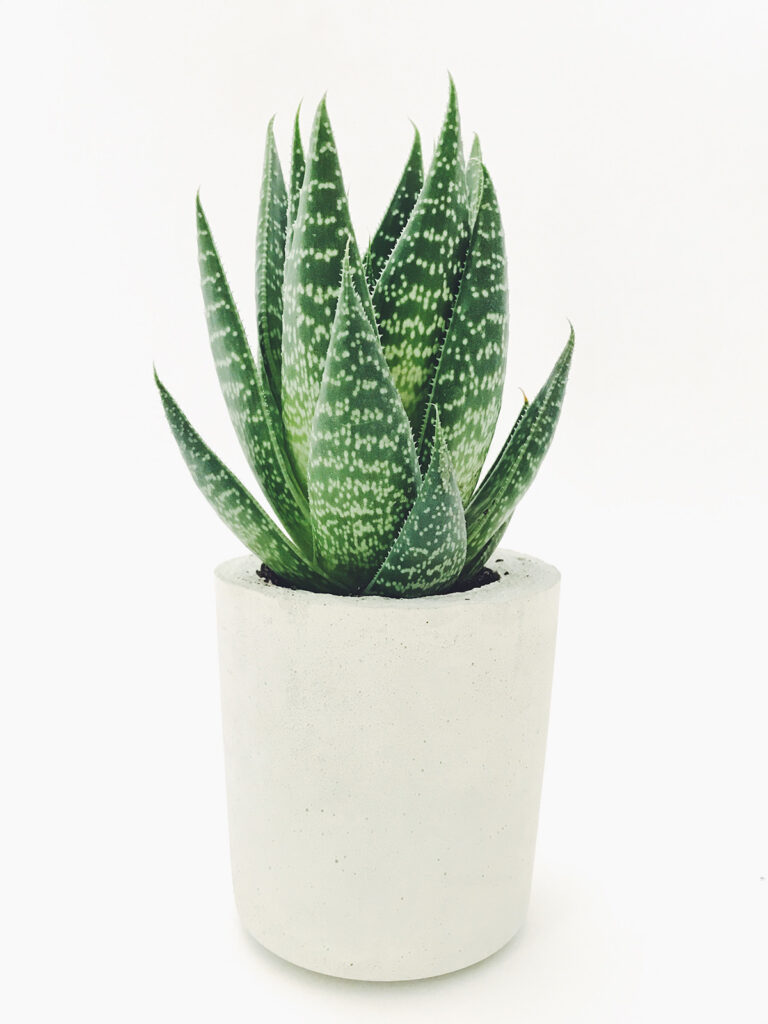
6. Aloe Vera Plant
The Aloe Vera Plant is a practical and resilient specimen that has thrived in my home for about a year now.
It is an essential plant for natural home remedies. For instance, snapping a leaf and rubbing the aloe on a burn can provide relief.
- Light: Aloe vera plants thrive in bright, indirect sunlight. They can also handle some direct sunlight, but excessive exposure can damage their leaves. An east-facing window with filtered sunlight is perfect.
- Watering: Aloe vera is a succulent that stores water in its leaves. Allow the top 1-2 inches of the soil to dry out completely between waterings. Water sparingly and be cautious not to overwater, as the roots are prone to rot. Water less frequently during the dormant winter months.
- Temperature: Aloe vera prefers temperatures between 59°F to 77°F (15°C to 25°C). It can tolerate brief periods of cooler temperatures but should be safeguarded from frost.
